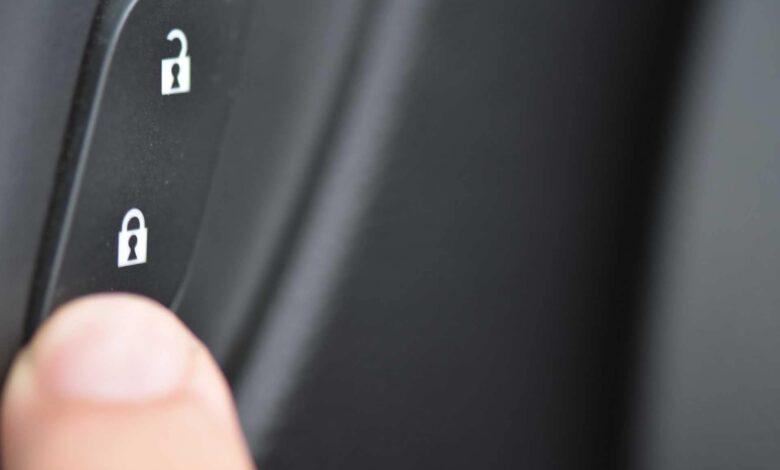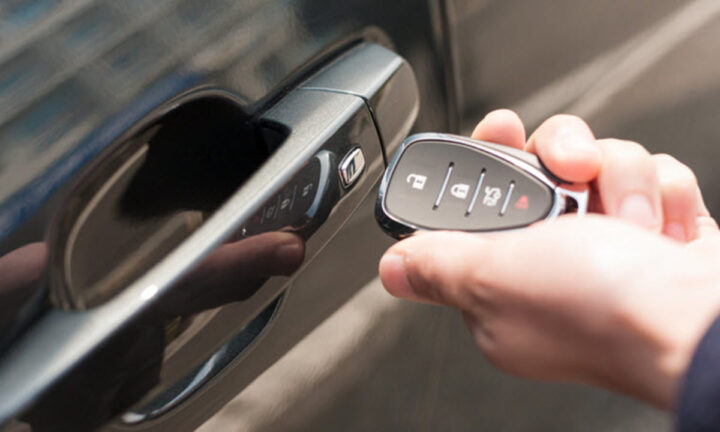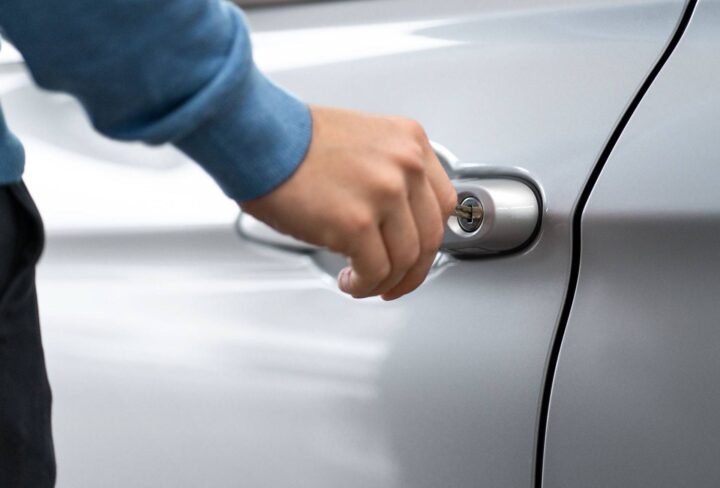Locking In: A Closer Look at Actuators in Car Door Locks (2024)

Nowadays, finding a car without an automatic locking device is rare. Whether they operate with a fob, a keypad, or some other device, they all have one thing in common—a lock actuator.
You probably haven’t seen a door lock actuator before because they’re hidden inside your car door. They’re only accessible when the inside door panel is removed.
Many drivers are unaware of how door lock actuators work. However, knowing it will help you to determine necessary actions should default arise. So here’s all there’s to know about actuators in car door locks.
What Does An Actuator Do On A Door Lock?
A door lock actuator is a component in electronic door locks responsible for locking and unlocking a vehicle’s doors. When a button is pressed to lock/unlock the door, the lock switch triggers the actuator.
A motor in the actuator triggers a series of gears. The final gear connects to a pinion and rack set of gear. This converts the rotational motion into the vertical motion of the motor to lock/unlock the door.
Essentially, the actuator’s motor powers a set of gears to lock/unlock your car door. That’s when you trigger the door lock. Communication is key between the door lock switch and the door locks to keep the actuator working.
Otherwise, you’ll be unable to lock/unlock the door.
The door lock actuator assembly features an in-built latch mechanism in most modern vehicles. It also has a switch that monitors if the door is open or locked.
Door lock actuators are connected to the inner and outer door handles via mechanical links or cables.
Actuators are mostly used to actuate the locking mechanisms in vehicles. They use a motor with a rack and pinion to get linear motion. Powering using a polarity extends the rack, and reversing it retracts it. The mechanism is quite simple.
What Causes Door Lock Actuators To Fail?

- When it is Worn-out: It produces a buzzing noise during the lock/unlock operation. If the electric motor inside the door lock actuator wears out, the lock may lock/unlock slowly. In some cars, a faulty door lock actuator may unlock but won’t lock or vice-versa.
- Exposure to Water: From our experience, most problems with the door open/closed switch are a result of water penetrating inside the actuator. It also affects the switch inside its connector. This explains why car alarm often goes off during or after rain.
- Broken Door Lock Cable: The cable connecting the door lock actuator to the door handle is often built into the actuator assembly. In this case, if the cable breaks, the assembly may is affected. And if not repaired, locking and closing becomes a problem.
- Loosed Door Lock Actuator Bolt: If the bolts holding the door lock actuator comes loose, it’ll cause the door not to lock properly. Therefore, bolts connecting the door lock actuator must always be checked if there’s a problem. It should be tightened properly if loose.
Common Signs of a Faulty Door Lock Actuator
You shouldn’t check the door lock system unless you notice something is wrong. It’s best to visit a professional once you notice your car behaving oddly when locking or unlocking the doors.
Here are the common symptoms of a damaged door lock actuator.
- The doors won’t lock.
- The doors won’t unlock.
- Doors make an unusual noise while locking/unlocking
- Doors will only lock/unlock sporadically.
- Car alarms go off randomly.
How To Change Actuator in Car Door Locks
Door lock actuators are in each door with a power lock. The process differs from disassembling and replacing bad art based on the model and manufacturer.
However, the basic steps are quite similar. Here’s how to change the actuator in car door locks:
- Disconnect The Battery: Start by disconnecting the car’s negative battery cable to prevent unforeseen problems. While it’s unlikely to happen, try avoiding electrical issues by disconnecting the battery. Also, ensure the door window is fully rolled up to avoid impeded access.
- Remove the Interior Door Panel: Access to the actuator is from inside the door. Remove the fasteners holding the interior door cup, panel, and pull handle. In most cases, you’ll need a trim stick. It allows you to pry plastic clips out without breaking the clips or the panel.
- Ensure all the Door Panel Fasteners Are Removed: Then slide the panel (gently) up and away. Disconnect any wiring harnesses, rods, or cables attached to it. Place it somewhere safe.
- Disconnect The Lock Cables And Rods: Disconnect the lock rods and transfer them to a new latch or actuator. You may need to replace the door lock cables and the electrical harness.
- Remove the Latch Assembly And Door Actuator: lose the door latch bolt from the door’s structure. Do this from the outside, where it joins the striker. Then, pull the door latch from the door. Avoid hitting the door glass as it may shatter.
- Install the New Part: Switch it over if the latch is separate from the new actuator. Install the new part into the door. Ensure it’s tightened properly to avoid rattles or the fasteners coming loose. Reconnect the wiring harness, the rods and cables, and any other parts of the door.
- Reassemble: Re-install the door panel. Replace any broken clips to prevent rattle or looseness. Then, connect the battery. You can now test your new door lock actuator.
Conclusion

Actuators are integrated into car door locks to ensure efficient locking/unlocking. When you press a button on the door’s interior panel, the doors lock/unlock at the command.
An electric actuator switches the position of the door lock on the latch. This either opens the latch or secures the locks. However, door lock actuators can fail over time and need replacement.
Most door lock actuators are fused in a door latch assembly. You’ll find one at the doors with a power lock. However, some are not integrated into the latch.
These types tend to be less expensive. Click here to find the exact specifications and prices for your car.

